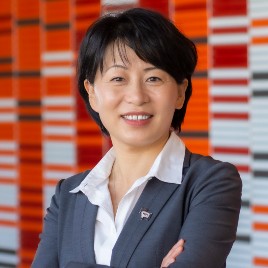President Grace J. Wang, PhD, joined an esteemed panel of researchers, academics, and industry leaders in Washington, D.C., last week at the National Academy of Science’s inaugural State of the Science event.
Delivered by NAS President Marcia McNutt, the first State of the Science address explored how research and development in the U.S. is responding to increased competition for resources and talent, and looked ahead to a future that will require an increased focus on science, technology, engineering, and math (STEM) education from early childhood through postdoctoral work; deeper partnerships with industry and philanthropy; and an easier path for foreign-born individuals to study, work, and live in the U.S.
K-12 STEM Education
Strengthening K-12 STEM education has been a long-term, complex, highly distributed, and very stubborn challenge in the U.S. that requires a robust, creative solution, Wang said in the panel discussion. She talked about the excitement and sense of exploration surrounding the FIRST Robotics Competition, an event with historic ties to WPI that has reached more than 3.2 million students over the past 30 years. Fifteen percent of students who attend WPI say they had some level of FIRST experience.
“They love it,” Wang said. “You can see the excitement, the engagement, the academic thirst, the curiosity. They want to do this. It’s that kind of excitement that we need to inspire, and we need to do this at scale.”





